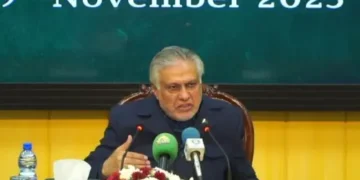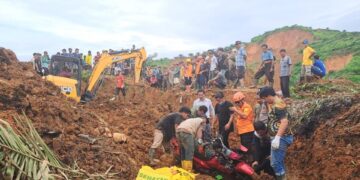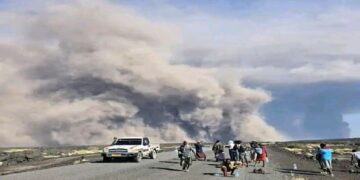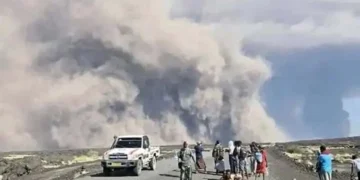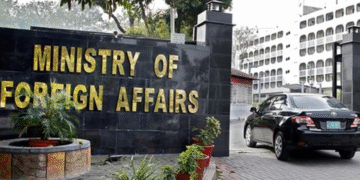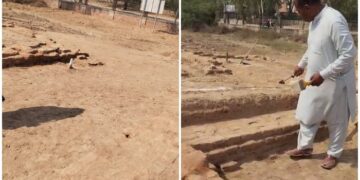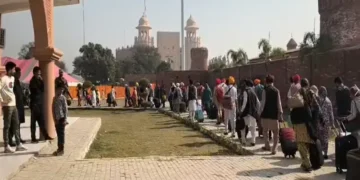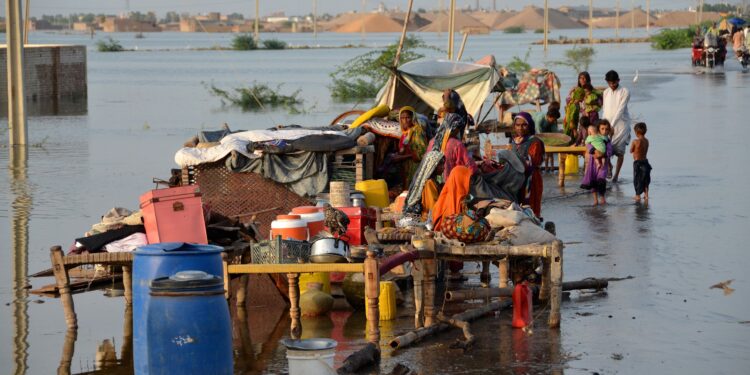Web Desk; Khyber Pakhtunkhwa’s Provincial Disaster Management Authority (PDMA) has issued a high alert in anticipation of heavy rainfall predicted across the province between September 15 and 19. In a weather advisory released on Sunday, the authority warned that rain-wind and thunderstorms are expected in districts including Dir (Upper and Lower), Chitral (Upper and Lower), Swat, Kohistan, Kolai Pallas, Shangla, Battagram, Mansehra, Abbottabad, Haripur, Buner, Malakand, Bajaur, Mohmand, Kohat, Peshawar, Charsadda, Nowshera, Mardan, Swabi, Khyber, Orakzai, Kurram, Hangu, Karak, and both North and South Waziristan.
According to PDMA officials, rainfall during this period could trigger dangerous increases in water levels, particularly on September 18 and 19, when intense downpours are forecast. The authority cautioned that flash floods may swell local drains and rivers, especially in areas of Dir, Chitral, Swat, Shangla, Buner, Kohistan, Mansehra, Abbottabad, Charsadda, Nowshera, Swabi, and Mardan. The advisory also highlighted the possibility of landslides, damage to fragile houses, and risks to electricity poles, solar panels, and advertisement structures.
The PDMA urged district administrations to remain on high alert, directing officials to prepare contingency measures for emergencies. Farmers and livestock owners were instructed to shift their crops and animals to safe areas, while tourists were warned to avoid dangerous zones.
Prime Minister Announces Electricity Bill Relief
Prime Minister Shehbaz Sharif, in a televised address, announced that residents of flood-hit regions will not be required to pay their August electricity bills. “The government, along with provincial administrations, the army, and citizens, is making every effort to provide relief to those devastated by this disaster,” he said.
The prime minister explained that families already struggling with the loss of homes, livestock, and livelihoods would not bear the additional burden of electricity charges. Consumers who had already paid their bills for August would see the amount adjusted against their September bills. “It is their right, and the federal government will cover the cost,” the PM assured.
Motorways and Transport Disruptions
As floodwaters surged across southern Punjab, the M5 Motorway was closed near Jalalpur Pirwala. A spokesperson for the motorway police confirmed that northbound traffic was being redirected from Uch Sharif, Jhangra, and Jalalpur interchanges, while southbound traffic was being diverted from Shah Shams, Sher Shah, and Shujaabad South. Authorities deployed sandbags and stones to prevent the encroachment of floodwater onto the motorway.
Situation at Barrages and Rivers
The Flood Forecasting Division (FFD) has reported high flood levels at Guddu Barrage on the Indus River, with inflows of over 633,000 cusecs. A high flood was also observed at Panjnad on the Chenab River, where water inflows exceeded 395,000 cusecs before beginning to fall. Experts predict that the flood intensity at Panjnad will reduce to a medium level within the next 36 hours.
In Sindh, Chief Minister Murad Ali Shah announced that between 650,000 and 700,000 cusecs of water could pass through Sukkur Barrage in the coming days. He assured that preparations had been made to protect vulnerable points across Kashmore, Shikarpur, Sukkur, and Ghotki. Currently, Guddu Barrage is handling 627,000 cusecs, with Sukkur expected to experience peak flows shortly.
Human and Material Losses
Punjab Relief Commissioner Nabil Javaid reported that the death toll in the province had climbed to 104. More than 4.5 million people have been affected by floods in the Ravi, Sutlej, and Chenab river belts, while 2.5 million individuals have been successfully evacuated to safer areas. Over 370 relief camps, 459 medical camps, and 391 veterinary camps are currently operational in flood-stricken districts.
In Narowal district, agricultural losses have exceeded Rs10 billion. More than 140,000 acres of farmland, primarily rice fields, have been submerged by floods from the Ravi and surrounding drains. Farmers reported that standing floodwater, four to five feet deep, has ruined crops and destroyed houses, leaving locals dependent on relief assistance.
Devastation in Sindh
Fresh fears of flooding arose in Sindh after floodwaters placed mounting pressure on the Baghar Ochto protective dyke of the Indus River. Chhachh Lake has overflowed, submerging villages across Ghorabari. Residents of Ramzan Mallah, Usman Khaskheli, Allah Dino Mallah, and other settlements have been stranded, relying on boats to access food and supplies.
Journalists visiting the area noted poor preparedness. Makeshift arrangements by the irrigation department included a small hut with junior staff, while a bulldozer stationed nearby remained unused due to lack of fuel. Villagers criticized the absence of senior irrigation officials during such a critical time.
Government Response and Relief Efforts
Multan Deputy Commissioner Waseem Hamid Sindhu confirmed that more than 100,000 people had been evacuated over the last three days. He said the number of relief camps had been doubled, with helicopters, boats, and drones being used to deliver dry rations and medical aid to isolated areas. Breaches in embankments at Shujaabad and Jalalpur are also being repaired urgently.
Punjab Law Minister Malik Sohaib Ahmed Bherth and Home Secretary Ahmed Javed Qazi visited flood-hit Muzaffargarh to oversee relief work. Meanwhile, Senior Minister Marriyum Aurangzeb, accompanied by other provincial ministers, visited Seetpur and Latti Mari villages in Muzaffargarh, where thousands have been displaced.
At Panjnad, entire settlements, including Lati Mari with a population of 40,000, have been submerged. Local residents described the destruction of homes, crops, and livestock, forcing families to take refuge in government shelters or with relatives.
Federal Ministers Call for Structural Change
Finance Minister Muhammad Aurangzeb stressed the need for long-term planning, acknowledging that some of the damage was “self-inflicted” due to poor zoning and unsafe construction practices. “We must reconsider where we build societies and enforce zoning laws to prevent such disasters in the future,” he said.
The minister noted that a complete assessment of agricultural damages is underway and that a 12–15-day evaluation process will follow once waters recede. He emphasized the need for coordinated efforts among local, provincial, and federal governments, with support from the State Bank of Pakistan.
Power Minister Awais Leghari echoed the prime minister’s relief measures, promising immediate implementation of bill waivers for flood-affected households. “The collected funds will be returned, and the Power Division will oversee swift execution,” he said.
International Support
A United Nations delegation met with Multan’s Regional Police Officer (RPO) Sohail Chaudhry to discuss the situation. The delegation was briefed on relief and rescue operations in Shujabad and Jalalpur Pirwala. The RPO assured that victims were receiving coordinated support and praised the role of district administration and police in evacuation and relief work. The UN representatives commended these efforts and pledged ongoing cooperation.
Local Administration Efforts
Khanewal Deputy Commissioner Dr. Salma Suleman inspected a canal breach near Chak Number 58/15-L, ordering emergency repairs and instructing irrigation officials to remain vigilant. Similarly, Multan’s DC reaffirmed that no flood threat loomed over Jalalpur Pirwala city, adding that repair and rescue work continued nonstop.
Current Flood Levels
According to FFD data, Guddu Barrage remained under high flood conditions, recording upstream discharges of 549,000 cusecs, while Sukkur Barrage was in medium flood with outflows of 422,000 cusecs. Kotri Barrage, further downstream, is currently at a low flood level.
Looking Ahead
The Pakistan Meteorological Department has forecasted that the Indus River at Guddu could reach a “very high flood” by September 14–15, with Sukkur likely to face a “high flood” within 24 hours. Authorities across Punjab and Sindh are working to reinforce dykes and embankments to minimize damage.
As floodwaters continue to spread devastation, the federal and provincial governments — along with the army, relief agencies, and international partners — are scrambling to provide assistance. However, the scale of the disaster highlights not just the immediate need for relief but also the urgency of long-term planning, sustainable infrastructure, and climate resilience to prevent recurring catastrophes.



